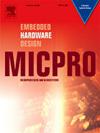Polynomial formal verification parameterized by cutwidth properties of a circuit using Boolean satisfiability
IF 2.6
4区 计算机科学
Q3 COMPUTER SCIENCE, HARDWARE & ARCHITECTURE
引用次数: 0
Abstract
Verification is an essential step in the design process of microprocessors. A complete coverage can only be ensured by formal methods, which tend to have exponential runtimes in the general case. Polynomial Formal Verification addresses this issue, opening a research field focused on providing formal methods which can ensure 100% correctness along with predictable and manageable time and space complexity. In this work, two SAT-based verification approaches in the field of PFV are presented. For both the verification of the cutwidth decomposition on the Circuit-CNF and the verification of the cutwidth decomposition on the Circuit-AIG, it is proven that their time complexity is parameterized by their respective cutwidth. This enables the definition of a class of circuits with constant cutwidth, for which verification can be ensured in linear time. After the theoretical considerations, both approaches are experimentally evaluated on the case study of adder circuits, underlining the established theoretical bounds. Finally, both approaches are compared and their significance in the research filed of PFV are stated.
用布尔可满足性参数化电路宽度特性的多项式形式验证
验证是微处理器设计过程中必不可少的一步。完整的覆盖只能通过形式化方法来保证,而形式化方法在一般情况下往往具有指数级的运行时间。多项式形式验证解决了这个问题,打开了一个研究领域,专注于提供可以确保100%正确性以及可预测和可管理的时间和空间复杂性的形式化方法。在这项工作中,提出了两种基于sat的PFV领域验证方法。对Circuit-CNF上的宽度分解的验证和Circuit-AIG上的宽度分解的验证,证明了它们的时间复杂度是由各自的宽度参数化的。这样就可以定义一类具有恒定切割宽度的电路,并确保在线性时间内对其进行验证。在理论考虑之后,两种方法都在加法器电路的案例研究中进行了实验评估,强调了已建立的理论界限。最后,对两种方法进行了比较,并指出了它们在PFV研究领域的意义。
本文章由计算机程序翻译,如有差异,请以英文原文为准。
求助全文
约1分钟内获得全文
求助全文
来源期刊

Microprocessors and Microsystems
工程技术-工程:电子与电气
CiteScore
6.90
自引率
3.80%
发文量
204
审稿时长
172 days
期刊介绍:
Microprocessors and Microsystems: Embedded Hardware Design (MICPRO) is a journal covering all design and architectural aspects related to embedded systems hardware. This includes different embedded system hardware platforms ranging from custom hardware via reconfigurable systems and application specific processors to general purpose embedded processors. Special emphasis is put on novel complex embedded architectures, such as systems on chip (SoC), systems on a programmable/reconfigurable chip (SoPC) and multi-processor systems on a chip (MPSoC), as well as, their memory and communication methods and structures, such as network-on-chip (NoC).
Design automation of such systems including methodologies, techniques, flows and tools for their design, as well as, novel designs of hardware components fall within the scope of this journal. Novel cyber-physical applications that use embedded systems are also central in this journal. While software is not in the main focus of this journal, methods of hardware/software co-design, as well as, application restructuring and mapping to embedded hardware platforms, that consider interplay between software and hardware components with emphasis on hardware, are also in the journal scope.
 求助内容:
求助内容: 应助结果提醒方式:
应助结果提醒方式:


